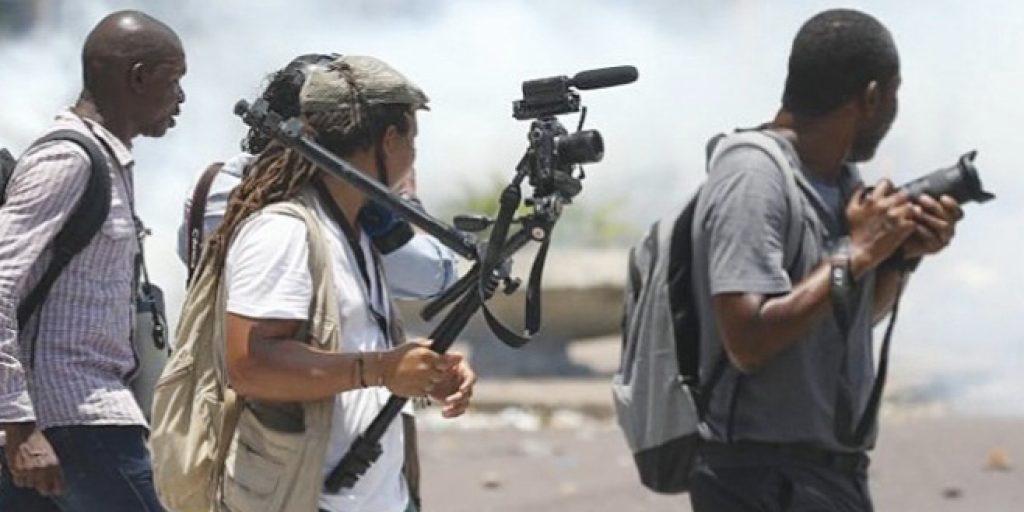‘Stronger link-ups are necessary between commercial and community media’
PICTURE: Polina Tankilevitch/Pexels
Alan Finlay
The 2024 State of the Newsroom report covers two main areas: job losses in the news media sector, and the challenges journalists faced in the coverage of the national and provincial elections in May.
We report the results of a snapshot survey of staff numbers in a diverse but representative basket of 29 newsrooms, with contributions from Mamaponya Motsai, Anthea Garman, and Gillian Jones all offering perspectives on how to respond to the current financial crisis in the news media sector.
In her article, Qaanitah Hunter discusses what it was like for under-resourced newsrooms to cover the elections, finding that online attacks on journalists and fake news were the biggest threats journalists faced.
Nechama Brodie’s commentary, on the other hand, offers an historical account of why online and offline threats should matter, suggesting that more work needs to be done to properly understand the impact of attacks on journalists in countries like South Africa.
The news media landscape in South Africa is currently suffering what might be an unprecedented financial crisis. Even financial journalism, which flourished in the early 2000s, and is perhaps one of the safer bets for advertisers, is up against the ropes
While mainstream print news media has been dying a slow, but probably certain death – the plans by Media24 to close its newspapers the most recent nail in the coffin – Internet news also appears to be teetering due to the big tech platforms scooping up the lion’s share of the digital advertising revenue generated by online newsroom content.
Late last year, Media24 told the Competition Commission’s Media and Digital Platforms Market Inquiry that Google took some 95% of the digital advertising revenue generated by news content from its flagship publication News24, the country’s biggest online news platform.
Meanwhile, in April this year, the Daily Maverick shut down its website for a day to protest what it called the ‘global state of emergency in journalism’. It said: ‘Journalism is experiencing a market failure and is at risk of collapse, with effects that will be catastrophic.’
Despite this bleakness, the media landscape in South Africa can be difficult to read. As the results of our snapshot survey suggest, there has been an overall increase in the number of jobs for journalists since Covid-19 across the diverse news producers that participated, even though we make it clear that the survey results need to be understood in the context of massive retrenchments in the sector of the kind we may see at Media24.
This was mainly driven by two big players, the SABC being one. But journalists can now also find work in interesting new places:
- a language and faith community that produces news
- a youth media platform, and
- a growing agricultural news publication responded to our survey
They all consider themselves running newsrooms in the journalism sense. Will this be the future of journalism?
The likes of amaBhungane, Bhekisisa and GroundUp, amongst them, have all shown how some of the most important journalism can happen in small newsrooms, but the question of reach, and how reach is important to the public interest, remains.
Reach is not just about audience numbers, but where newsrooms have the capacity to go to do the job of reporting
Hunter’s observation that most of the attacks on journalists during the elections were online begs the question of whether this was partly due to under-resourced newsrooms not having the capacity to send many journalists out on assignment to report on events as
they unfolded.
As former Eyewitness News Editor-in-Chief Sbu Ngalwa told her, just 10 years ago, as a reporter for the Sunday Times, his only job was to follow Zuma’s campaign trail. That doesn’t seem possible anymore
In both senses of reach, the SABC towers above all others, and in a fractured media environment we are likely to see an intensified struggle for control of the public broadcaster, probably with one or two – maybe only one – commercial news providers hovering above the rest, at least online.
What does seem clear is that co-operation rather than competition will be necessary between newsrooms if they are going to continue working in the public interest
This is happening, as with the ongoing joint investigations by the Daily Maverick and News24. GroundUp working as a news agency and making its content available for republishing is a form of cross-newsroom cooperation, as is the republishing of Bhekisisa content.
Stronger link-ups are necessary between commercial and community media, who have their feet on the ground in small communities.
As Motsai suggests in her article on media sustainability in this issue, innovation and skills-sharing can happen through this cooperation; reach can be increased too, and maybe new avenues for revenue generation.
We also need fresh forms of state, business and institutional support. A useful outcome from the Competition Commission’s inquiry is a good place to start.
- Finlay is the Editor of State of the Newsroom and a research associate at the Wits Centre for Journalism




